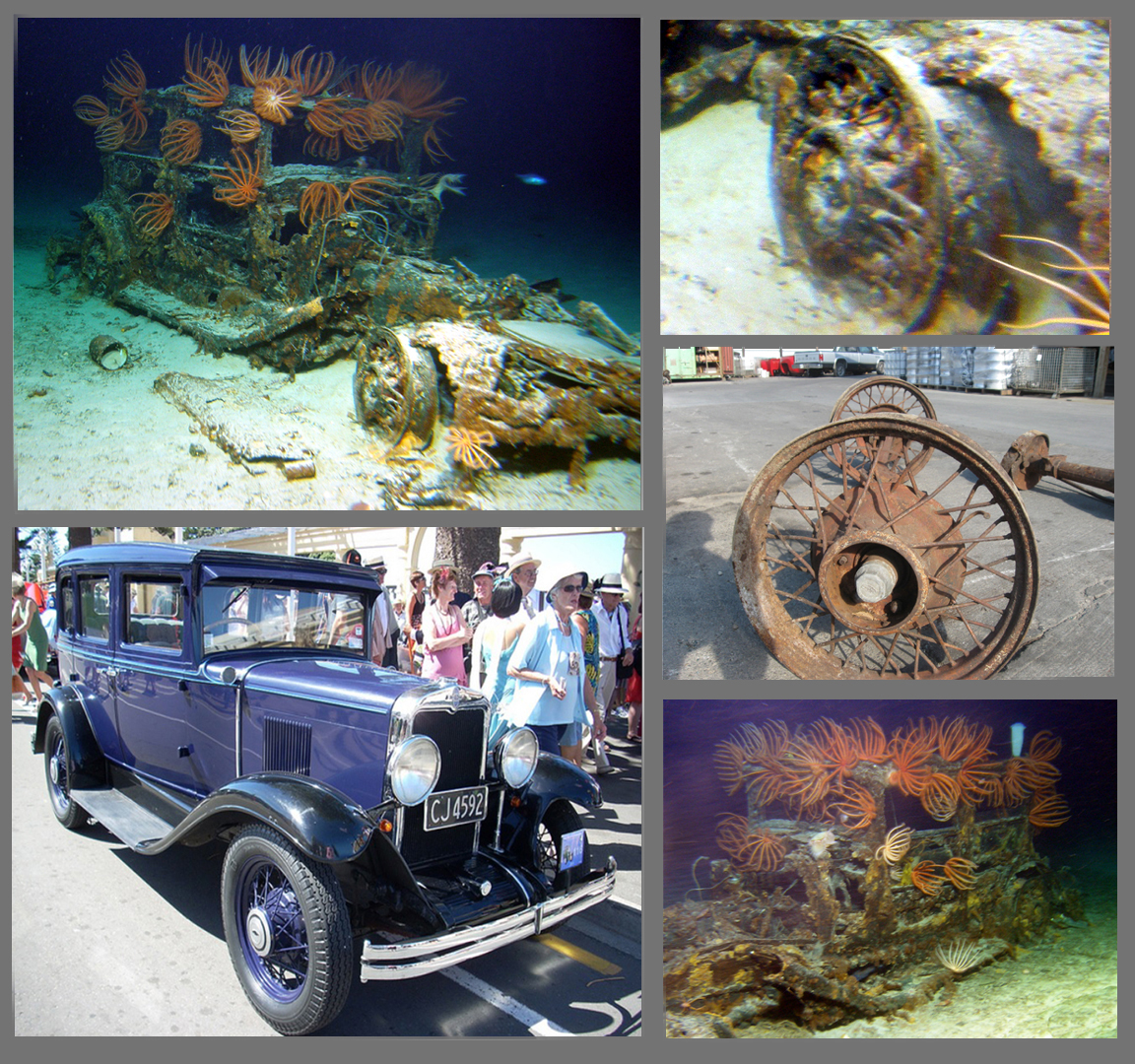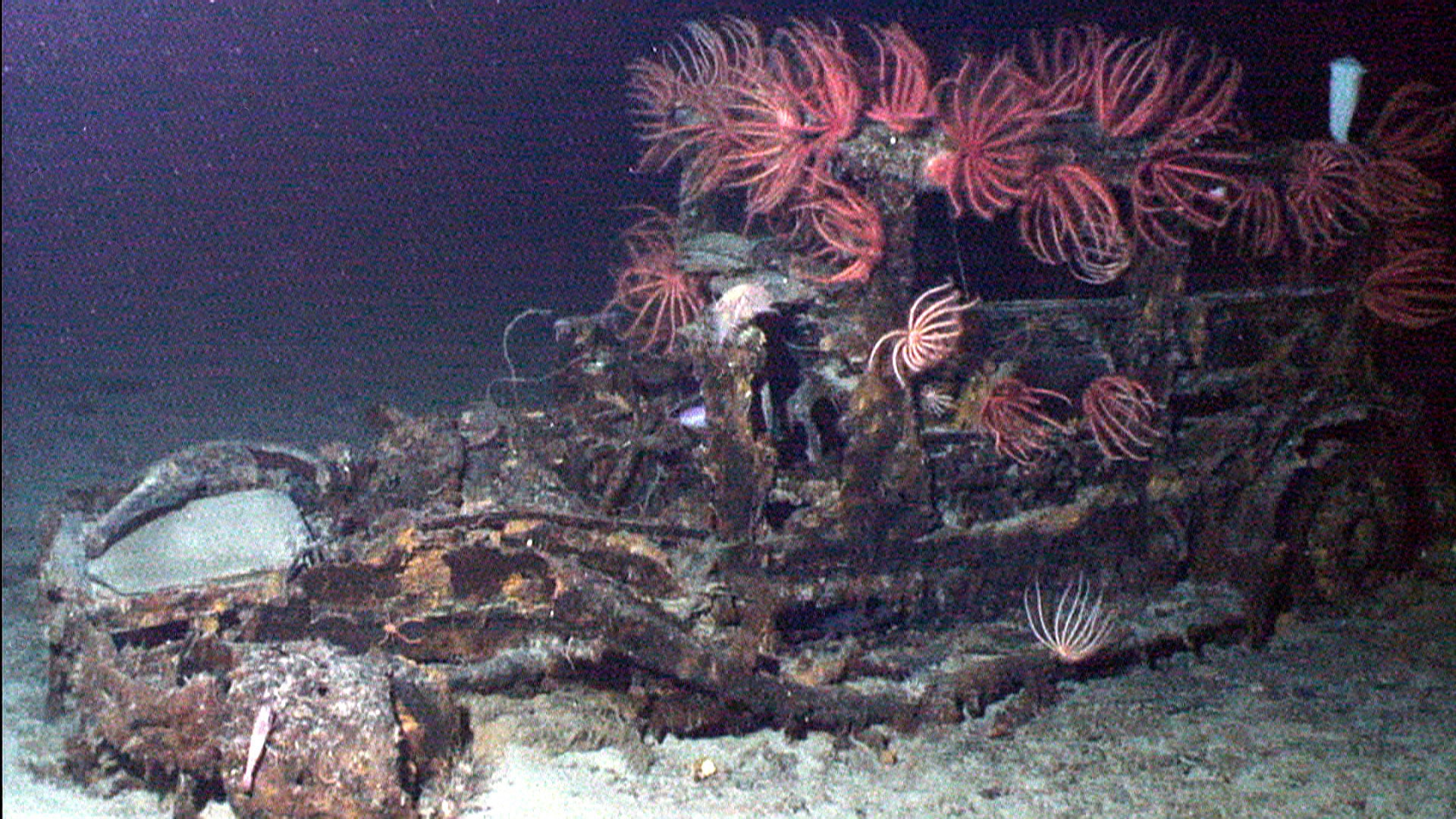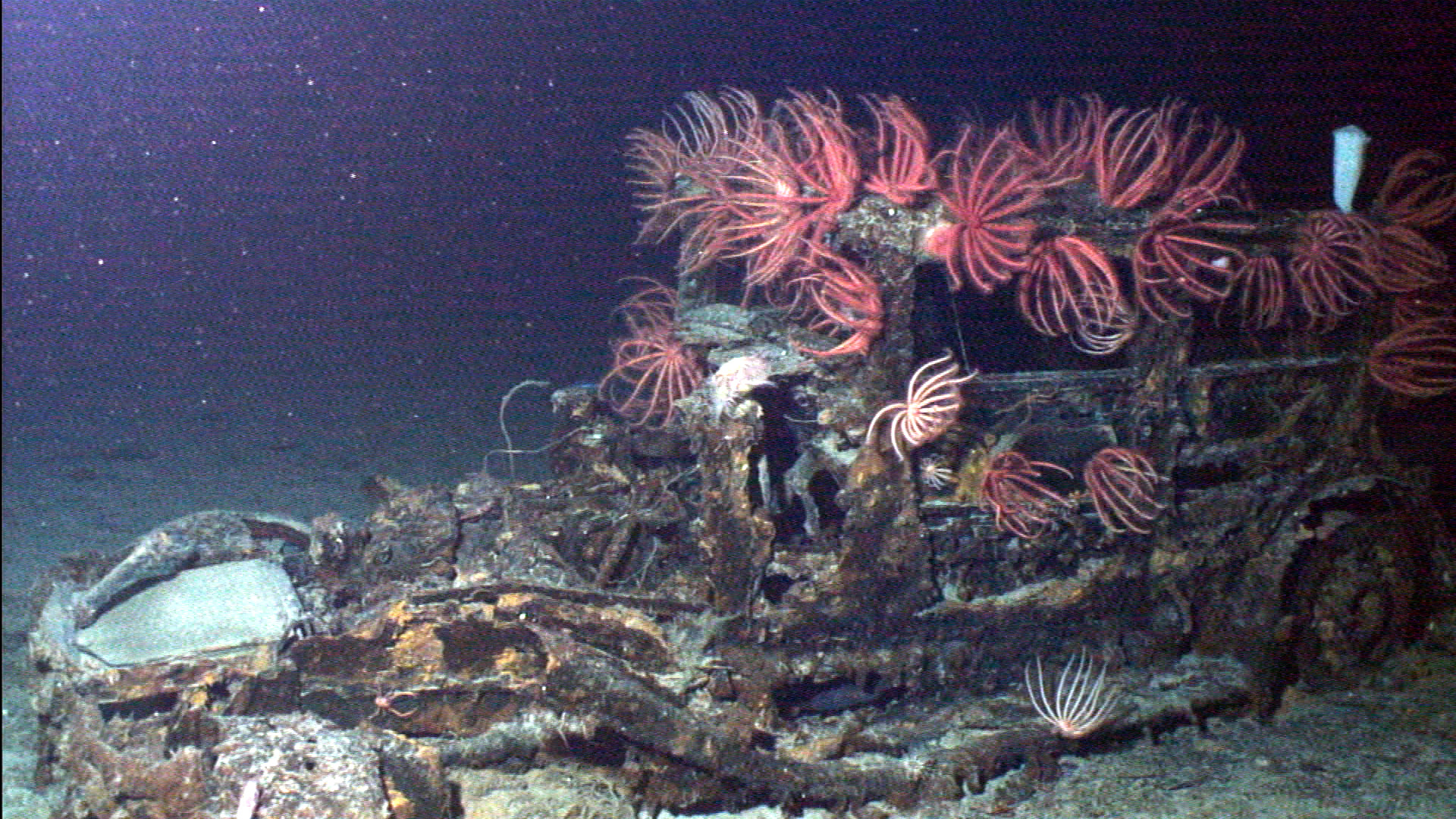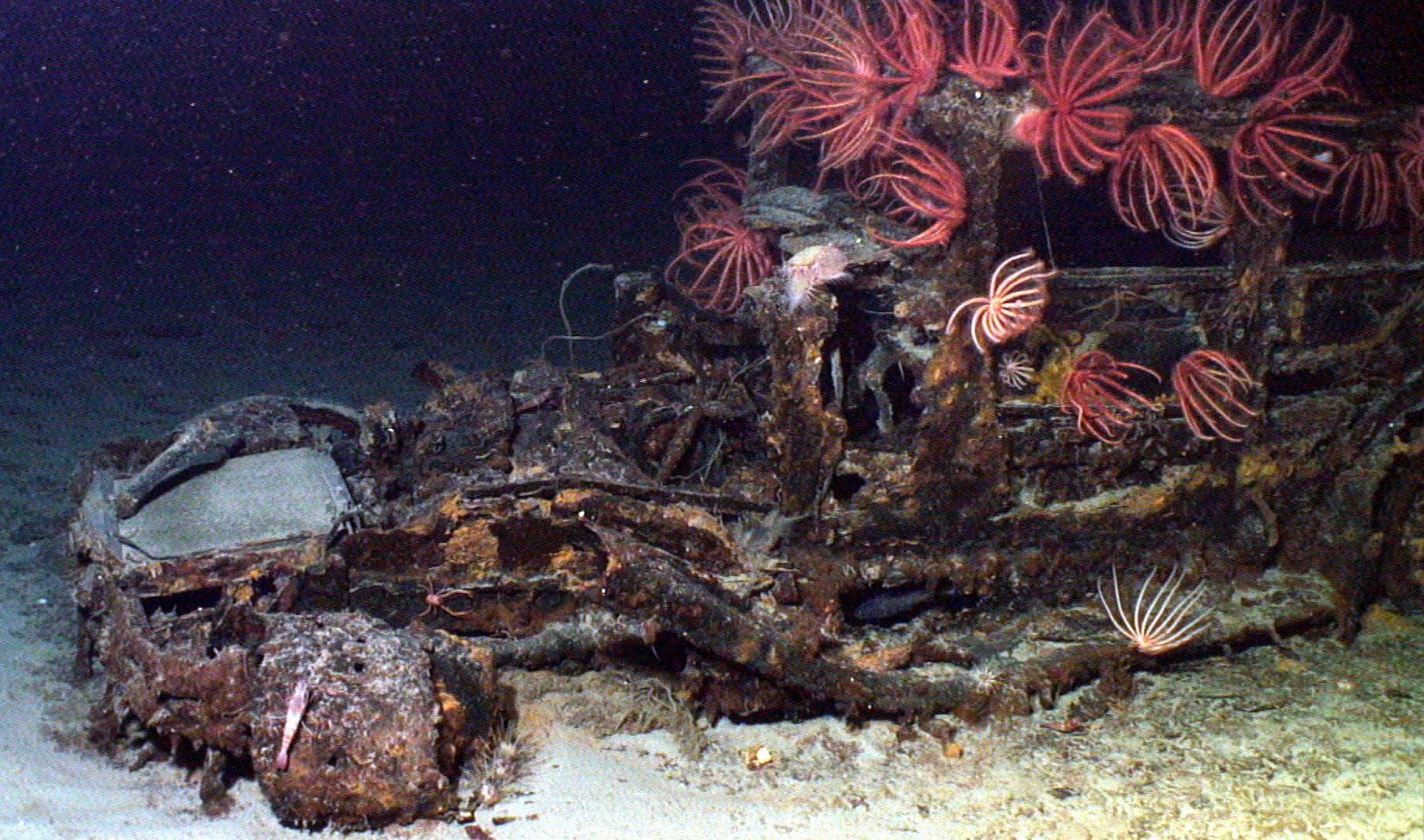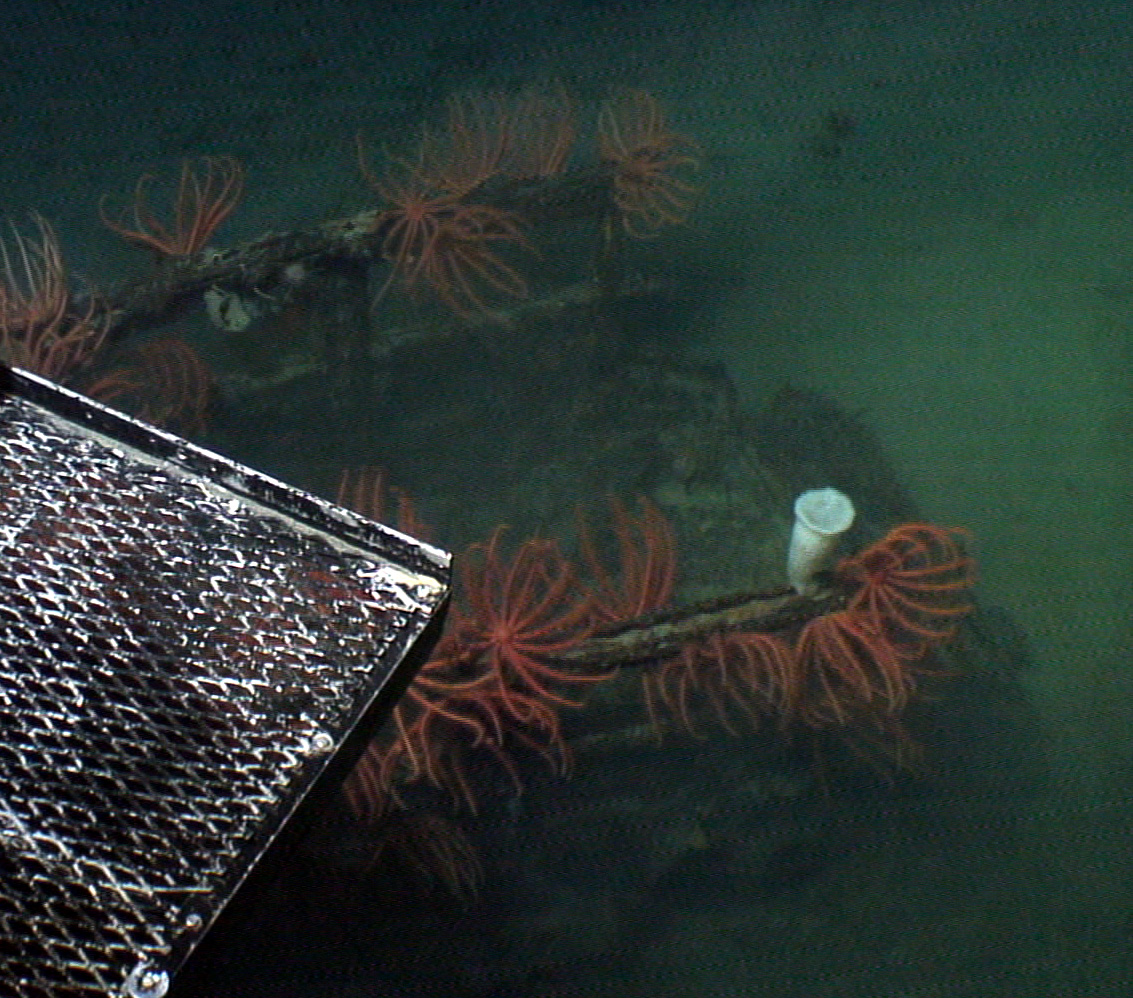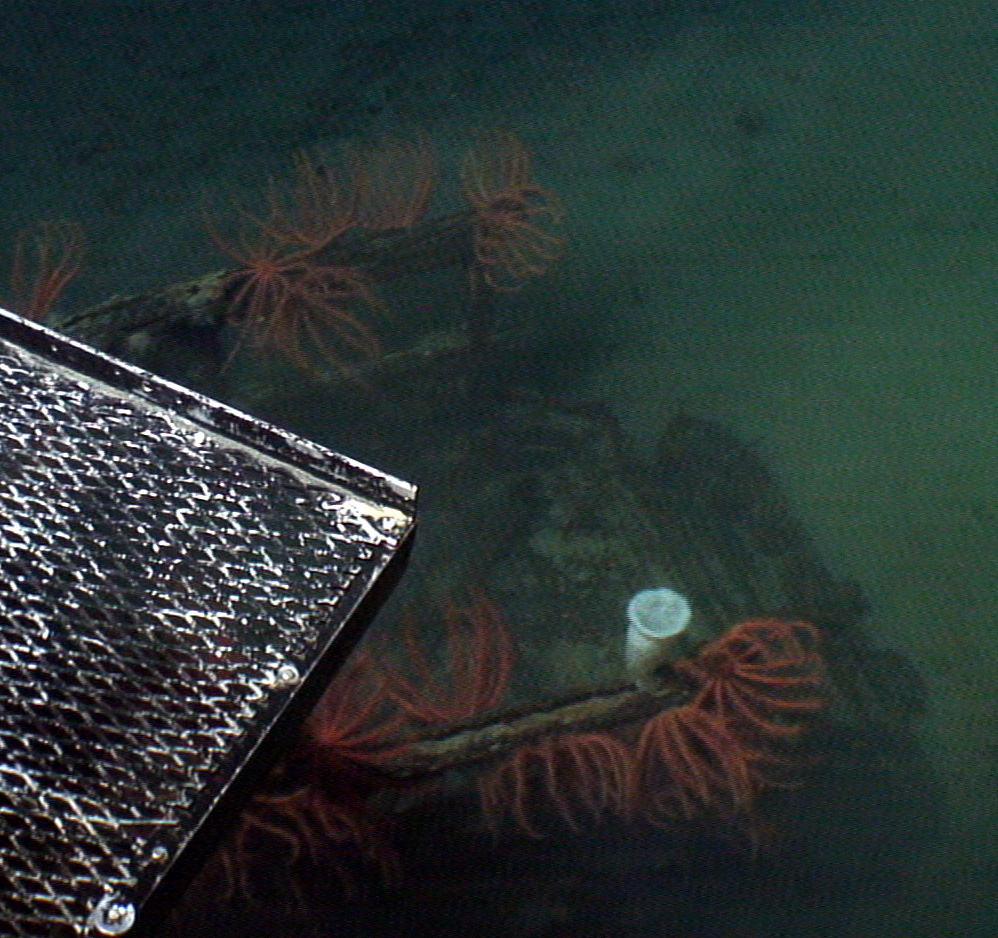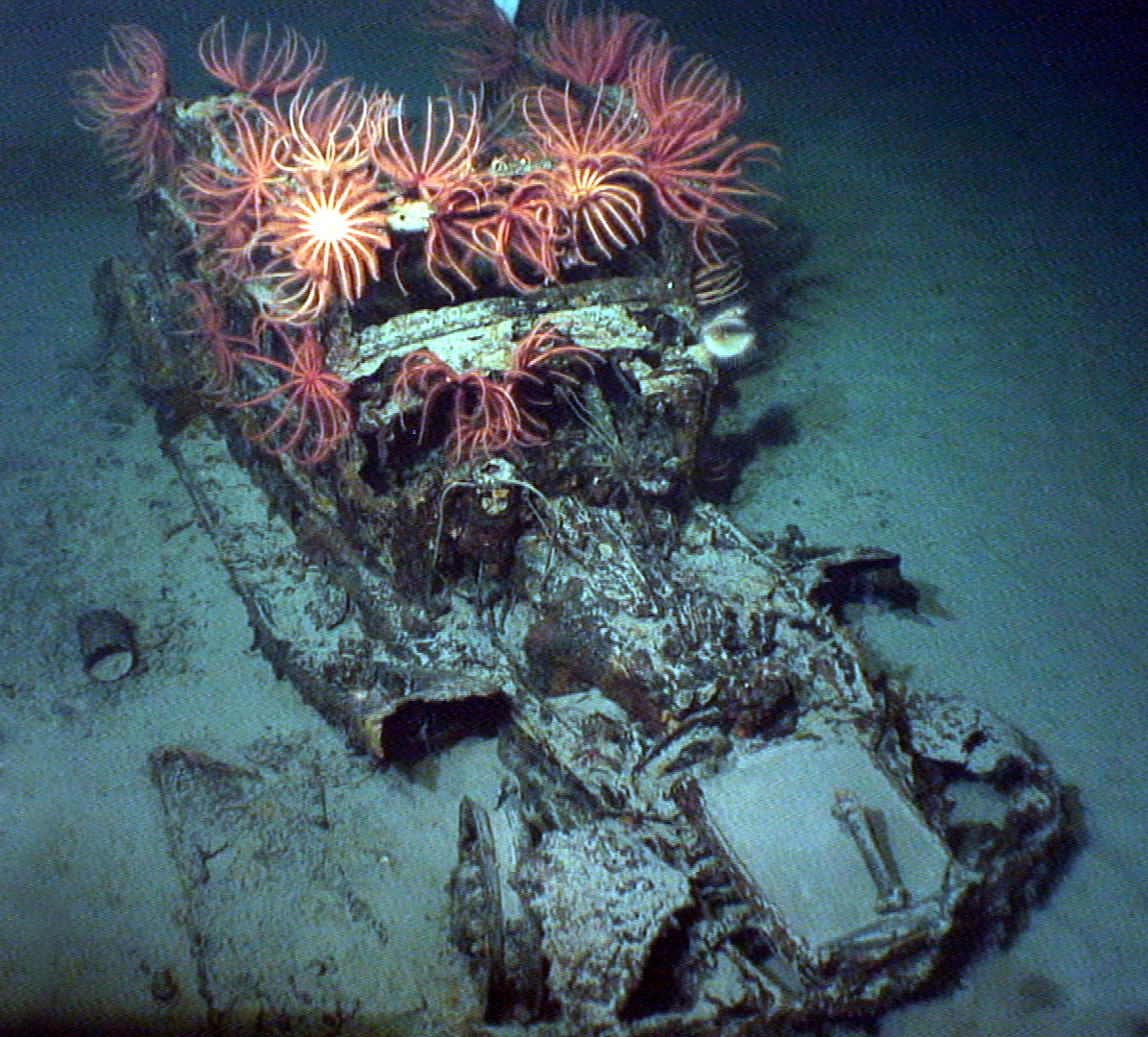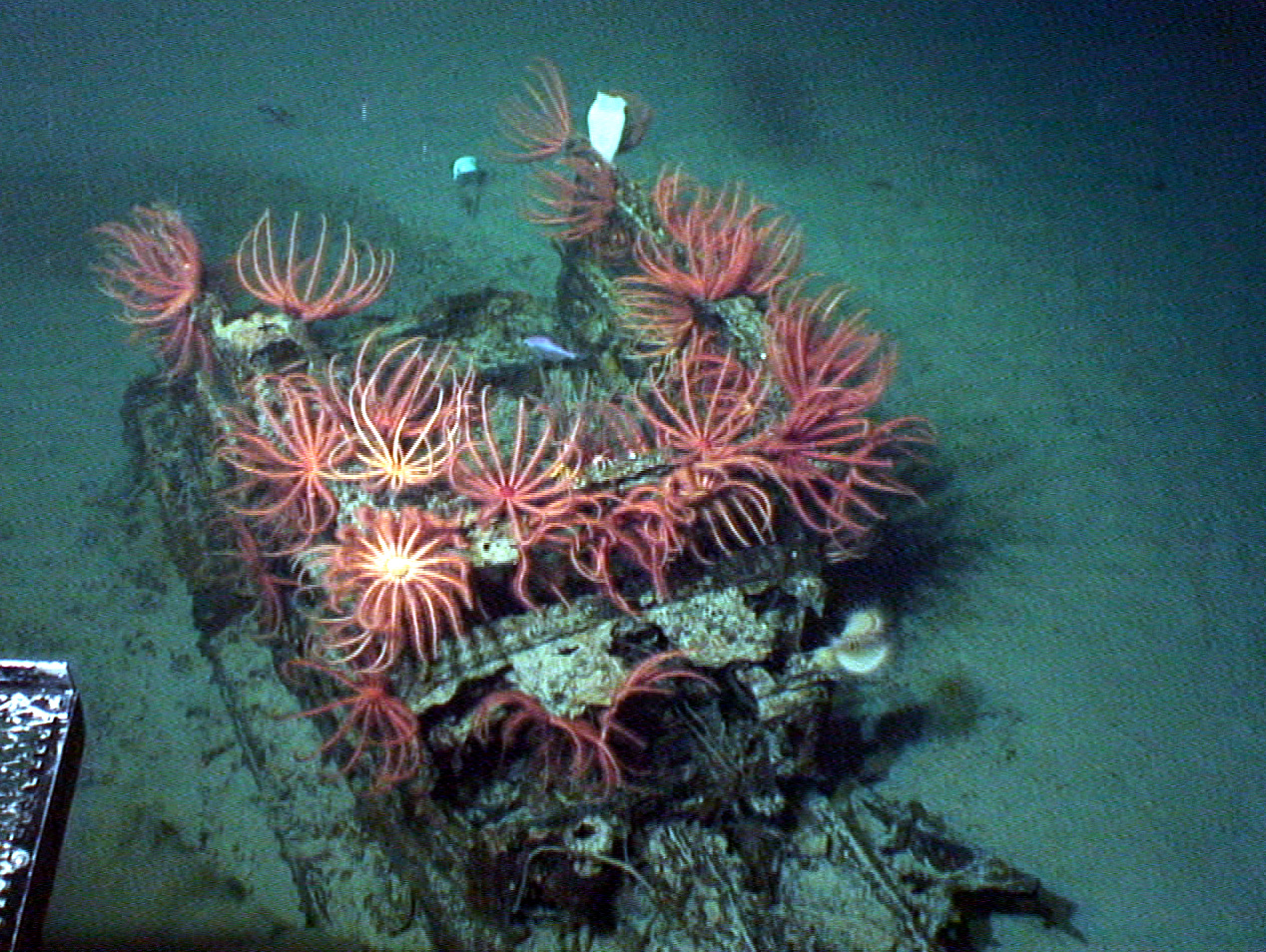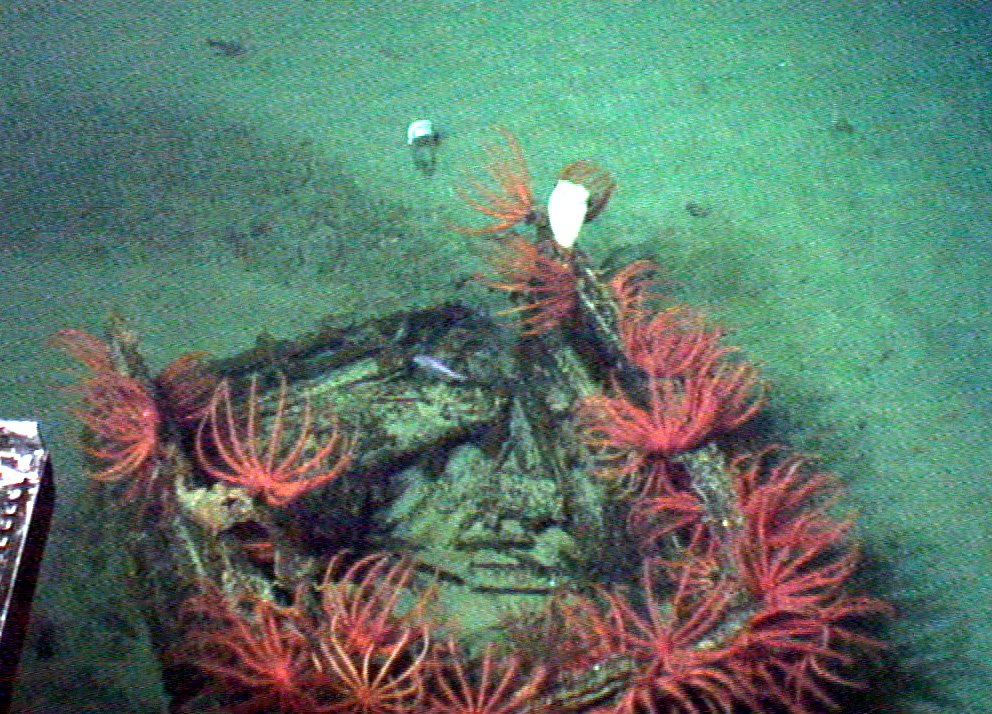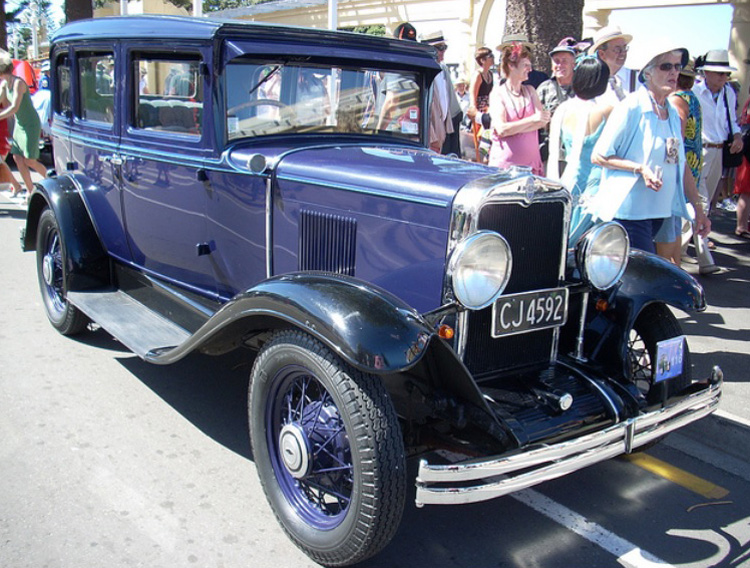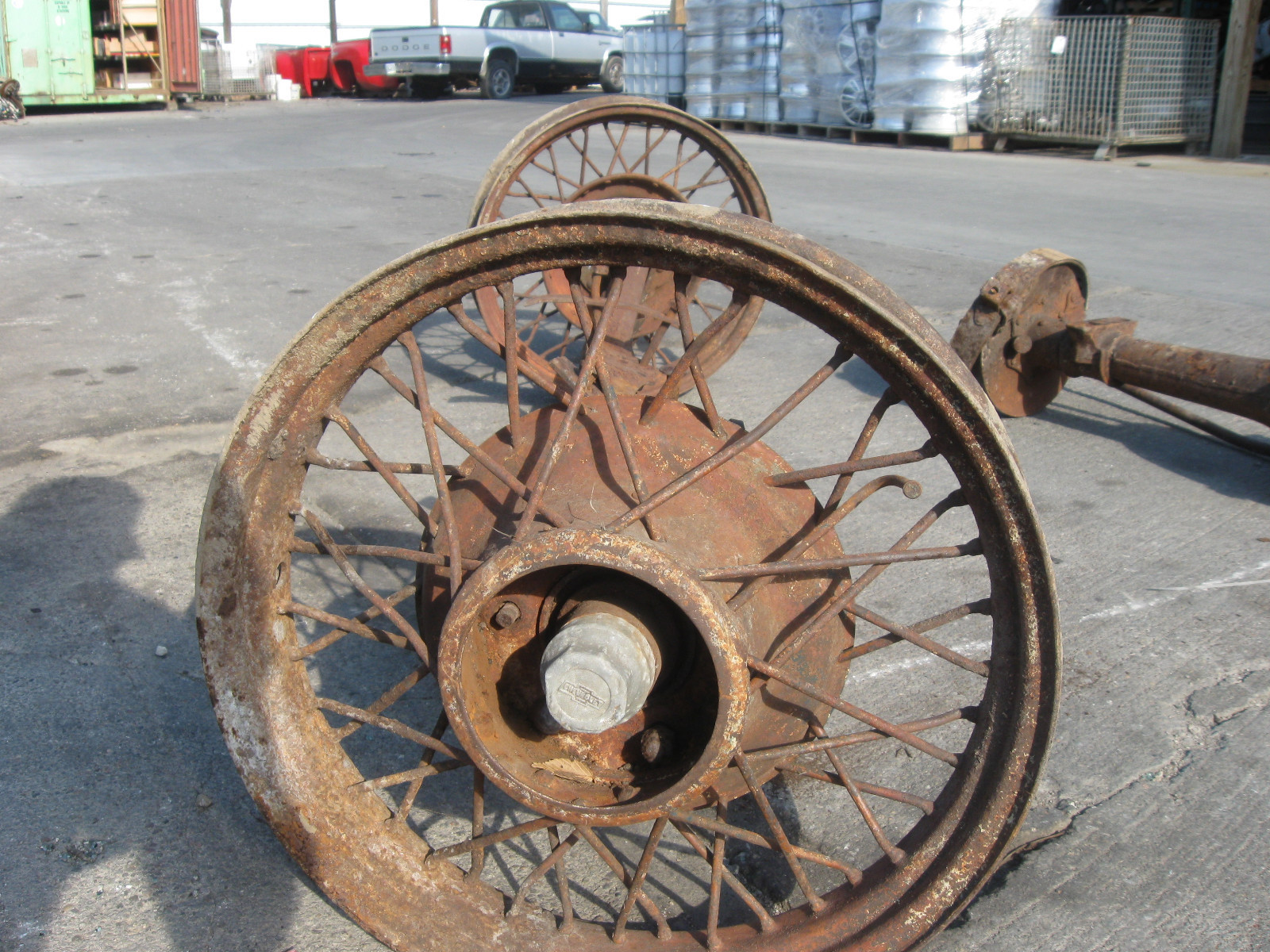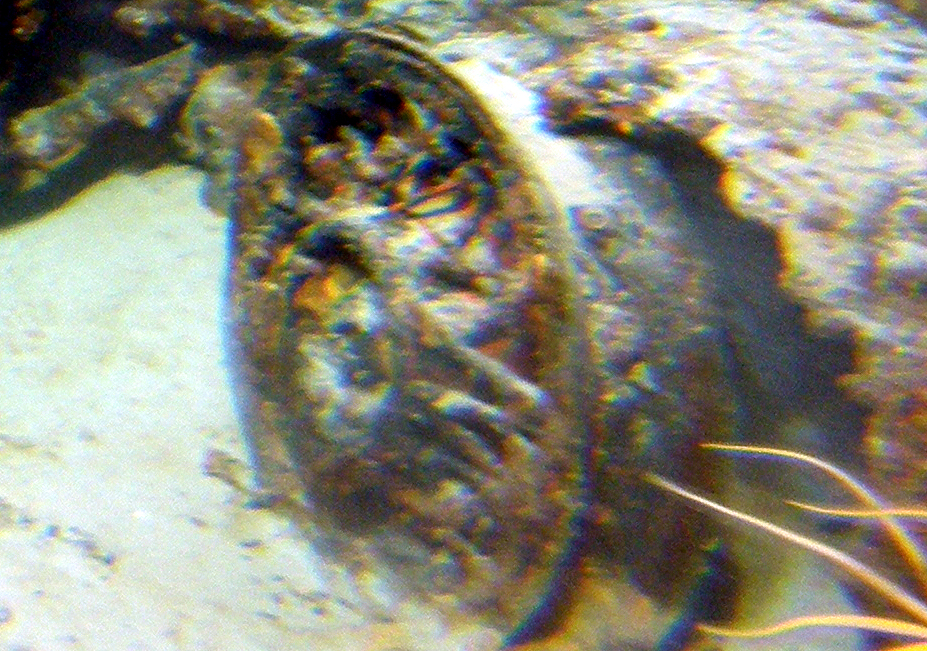| HURL Artifact No. |
VEH-43 |
*Denotes approximations and speculations |
|
|
|
|
|
|
|
|
| Name: |
Chevrolet |
Lost: |
Unknown |
| Artifact Type: |
Sedan |
Found: |
6-Jul-2013 |
| Nationality: |
USA |
Dive No: |
PV-799 |
| Class or Make: |
Chevrolet |
Location: |
South Oahu |
| Model: |
Sedan |
Depth (m): |
531m |
| Purpose: |
Transport People |
HURL crew: |
Kerby, Cremer |
|
|
| Serial Number: |
Unknown |
Additional Dives: |
|
|
|
| Built/Launched: |
Chevrolet Motor Company, Detroit, MI *1930 |
|
|
|
|
|
|
|
| Length: |
*12 |
| Width: |
*6 |
| Height: |
|
|
|
|
|
|
|
|
|
|
|
|
|
| Circumstance of Loss: |
Intentionally Disposed |
Crew Personnel/Position: |
1 Driver and 4 Passengers |
|
|
|
|
| Reason of Loss: |
*Old age or failure |
Crew Survivals/Fatalities: |
n/a |
|
|
|
|
| Artifact History: |
Unknown |
|
|
| Artifact Condition: |
Radiator has toppled over forward. Front fenders are decaying on the very fronts. Distinctive Chevy wire spoked rims are clearly present and show the wheels were once rubber. The fire wall is present although the sides are corroding away. The engine is still in place with one cover lying on the seabed nearby. Much of the engine's components are distinguishable. The front windshield is still fully framed although the glass is gone. It has a mild gradual arc on the lower end. Steering rod can be seen. The vehicles sides are up and it appears to have had a soft top. The very back piece on the rear end of the car is down. |
|
|
| Additional Information: |
The upper portions of this vehicle is covered with numerous red and orange brisingids. These wheel spokes became most prominent in the 1930s, but the body shape and style looks to be more similar to the late 20s. It could be a 1930 model or possibly an earlier model that had a wheel upgrade later on in its life. *3000 lbs |

